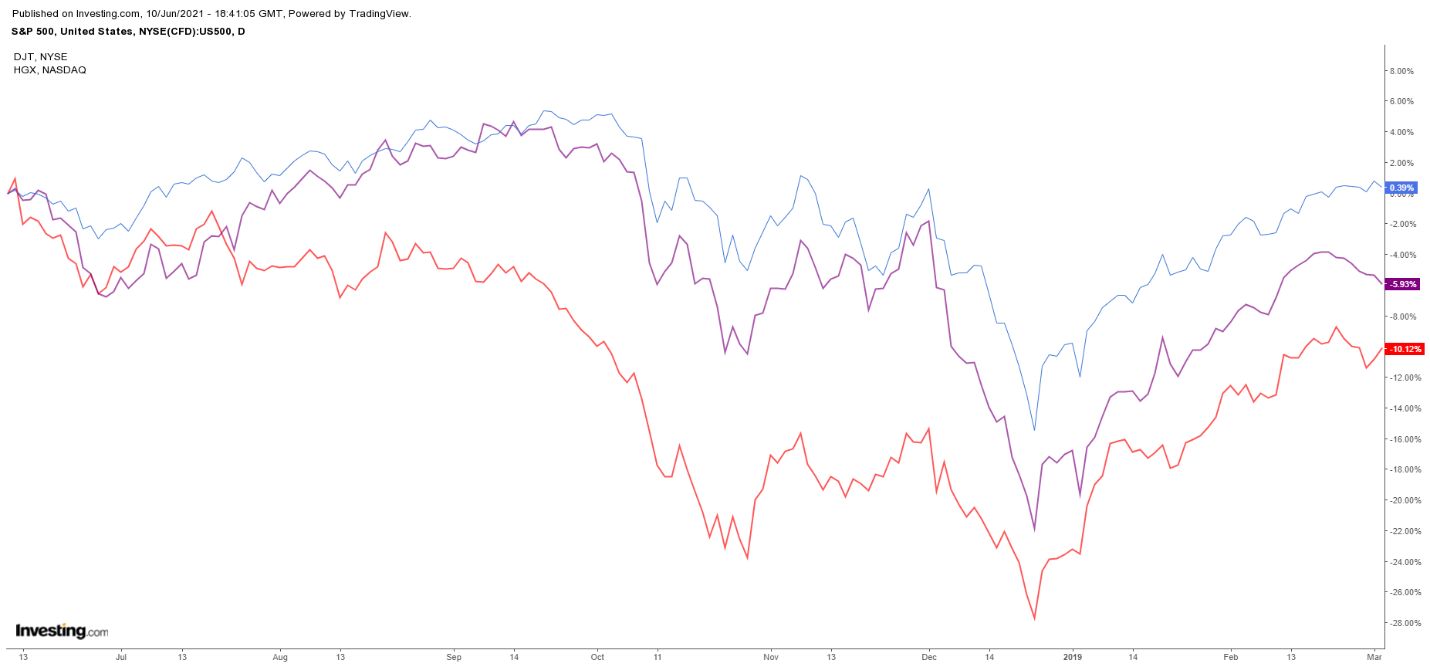This article was written exclusively for Investing.com
Since the weaker than expected jobs data last week, bond yields have fallen sharply, with the 10-year yields now below 1.5%. They dropped further following the hotter than expected consumer price index reading on June 10. There is a message here because copper prices have fallen by nearly 8% since May 10. This, coupled with declining 10-year breakeven inflation expectations, appears to signal not inflation but disinflation or a lower inflation rate.
This has spilled over into parts of the equity market, with the PHLX Housing index and the Dow Jones Transportation Average falling by roughly 13% and 6%, respectively since their peaks. Suddenly there are stunning similarities that have developed that have all the warning signs from the fall of 2018.
The Same, But Different
While today is different from a monetary policy standpoint than 2018, the fears of slower growth at the end of 2018 and a possible recession contributed to the nearly 20% decline in the S&P 500 back then. It may not be much different now, with earnings growth rates expected to decline dramatically heading into 2022.
Couple this with falling commodity prices and sinking inflation expectations, parts of the market may be starting to worry about growth slowing as we begin to enter 2022. The transports and housing sectors are two of the more economically sensitive parts of the market. These two sectors are watching inflation expectations rolling over and bond yields dropping. This sends a thunderous message that inflation may not be the issue. Still, instead, the worries should focus on slowing inflation and growth.
Weaker Growth
While calls for a recession certainly aren’t front and center. The weaker than expected job growth could tell a tale that the US economy is in for a longer and slower economic recovery than initially believed. It could be one reason why we have seen this significant shift in some of the more economically sensitive parts of the financial markets. That would also confirm why inflation expectations and commodity prices are dropping on fears of weakening demand.
In 2018, the housing index began to diverge from the S&P 500, starting in July. The Dow Transports began to separate from the S&P by the middle of September.

We can see that the same thing has started in recent weeks, with the Housing index falling sharply, and now the Dow Transports is starting to drop. The S&P 500 has been trending sideways for the most part over this time and has to pick up on or ignoring this trend.

May Take Much Longer
At this point, the is no clear indication that the economy is about to slow dramatically other than the disappointing job numbers. However, earnings growth next year is expected to slow dramatically. Estimates for S&P 500 EPS growth in 2022 are at 11.7%, according to the latest data from Refinitiv, which is down from estimates of nearly 17% at the beginning of January. Additionally, that is down dramatically from an expected 37% growth rate in 2021.
If expectations of slower growth are starting to grip the market, then it would make sense to see the more economically sensitive parts of the market get hit first as the broader index holds up for longer. This is nearly the identical pattern in 2018, with fears of the Fed overtightening causing a recession. This time may be different because the Fed is already running a very accommodative monetary policy. In the end, the difference between today and 2018 is that dissimilar.
